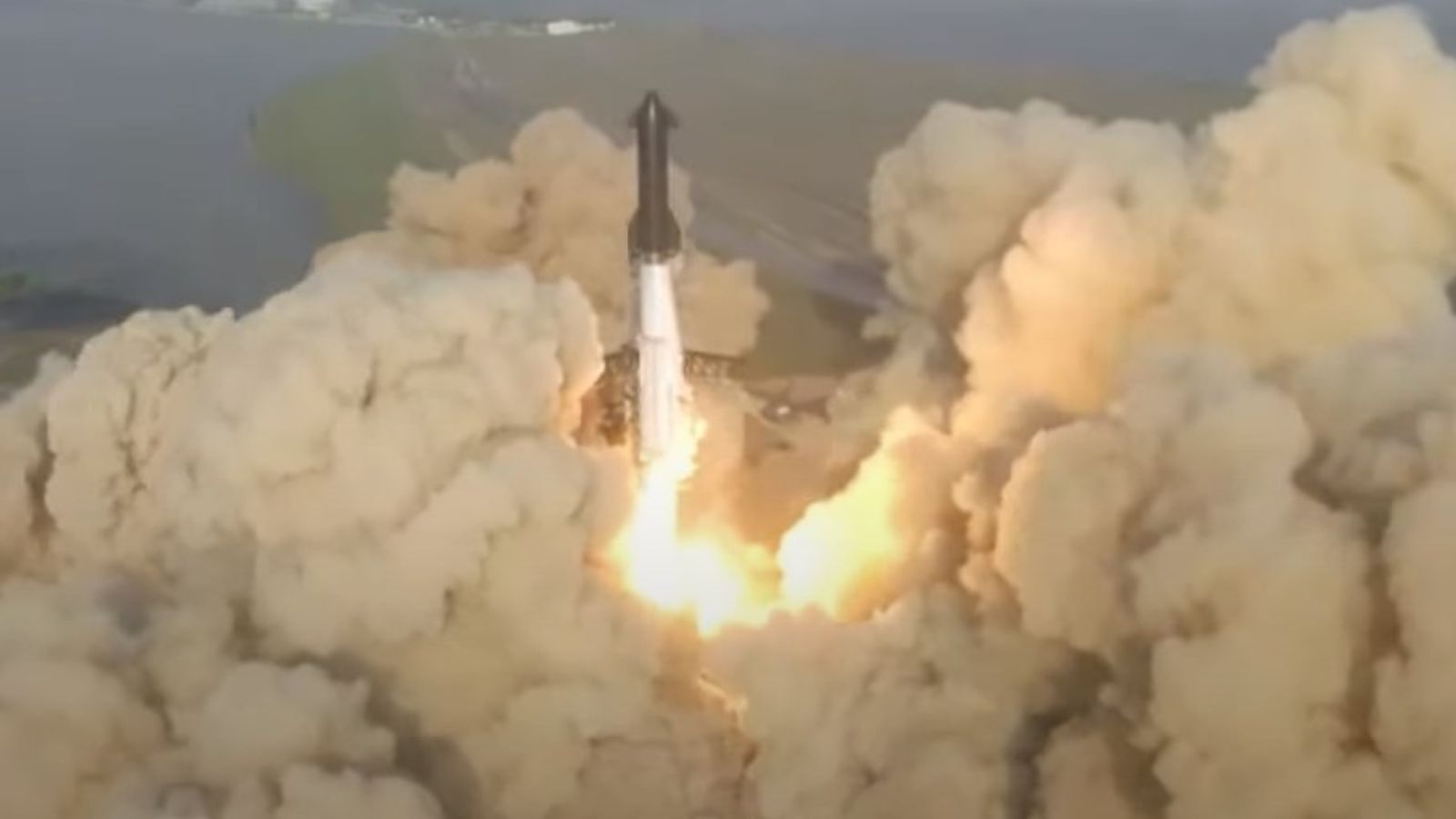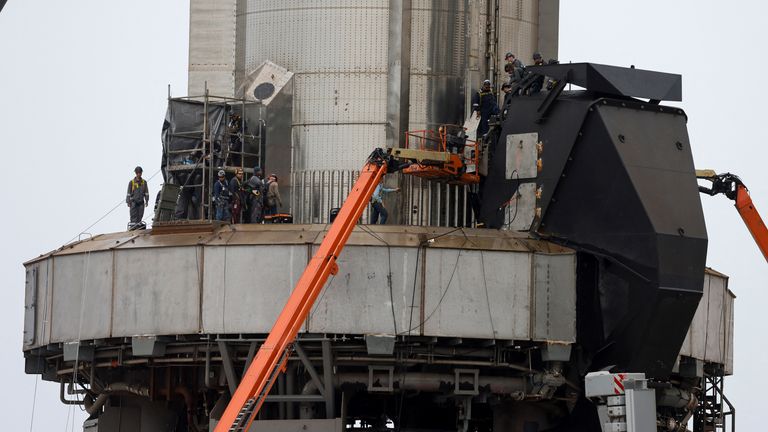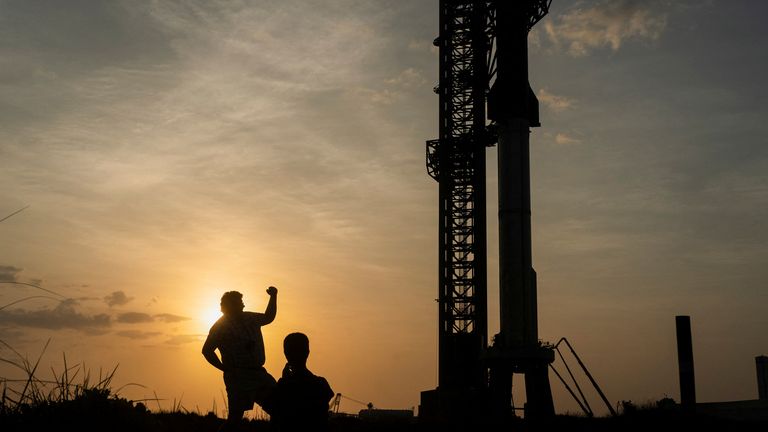SpaceX has launched its Starship rocket system, the biggest and most powerful ever made, for the first time in a landmark test.
Three days after an inaugural flight was scrapped due to a last-minute glitch, it blasted off from Boca Chica in southern Texas as thousands of spectators watched on nearby.
Starship is made up of two stages – a Super Heavy booster that generates the needed power to reach orbit, and the spacecraft tipped to one day take humans back to the moon and eventually Mars.
Combined, the craft and booster – which has 33 rocket engines – have a record-setting height of 120m.
Thursday’s take-off, the first orbital test of Starship, came two months after Super Heavy enjoyed a successful stationary launch test, generating enough power to reach orbit.
Upon reaching orbit on Thursday, Starship will be deployed while the booster – on this occasion a prototype called Booster 7 – is discarded into the Gulf of Mexico.
Starship will complete a full orbit of the Earth and splash down into the Pacific after re-entering the atmosphere.
The whole flight would take about 90 minutes.
While SpaceX is best known for transporting its Starlink satellites, there is no cargo aboard Starship this time.
There are also no humans on board, and no landings will be attempted.
Company boss Elon Musk hopes that Starship will be used to take humans to Mars in future, and NASA has already signed up to use it to take humans back to the moon via its Artemis programme by 2025.
Musk set low expectations for the inaugural launch, but said the firm “learned a lot” from the failed first attempt.
Starship’s first orbital test comes after the US flight regulator issued SpaceX with a five-year licence, saying it met all safety and environmental requirements.



